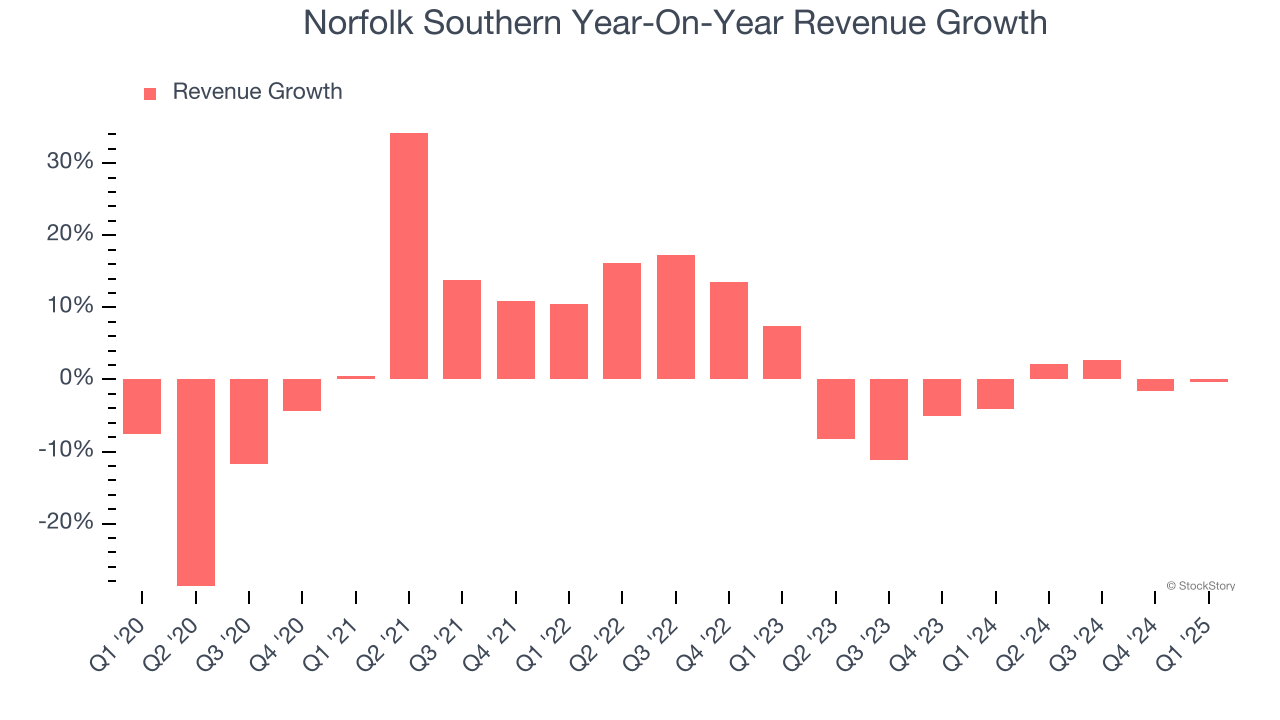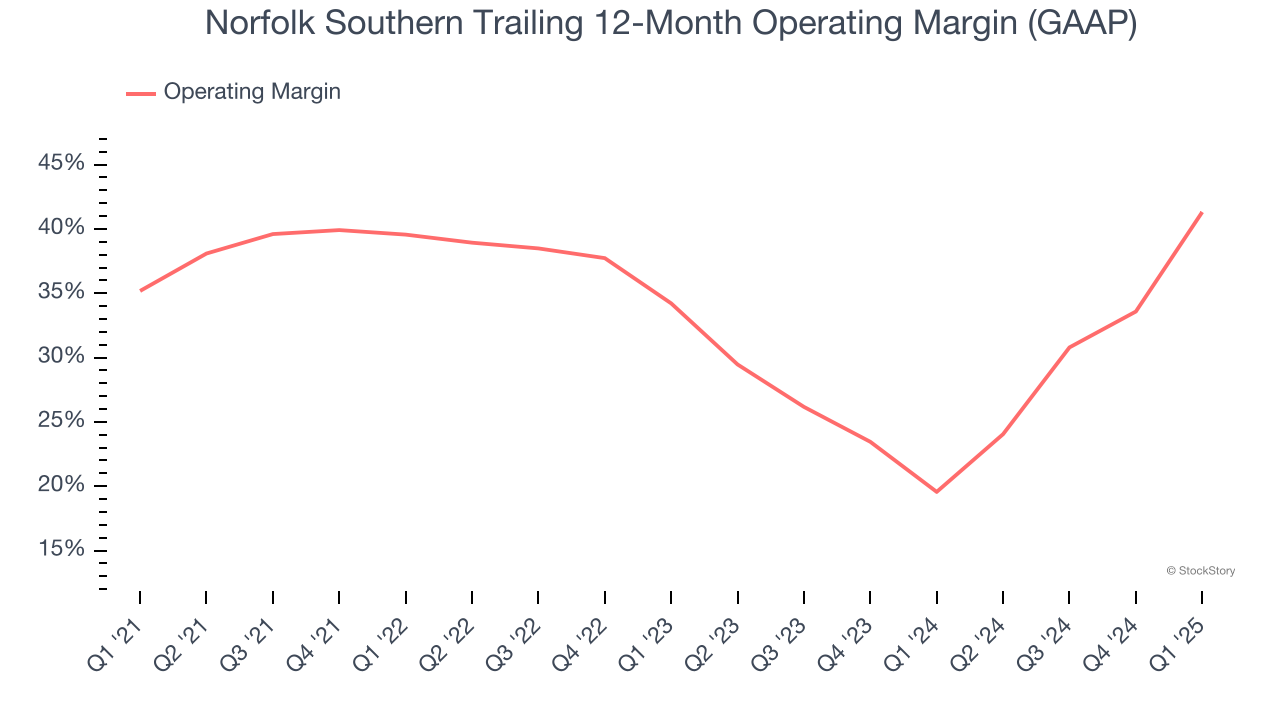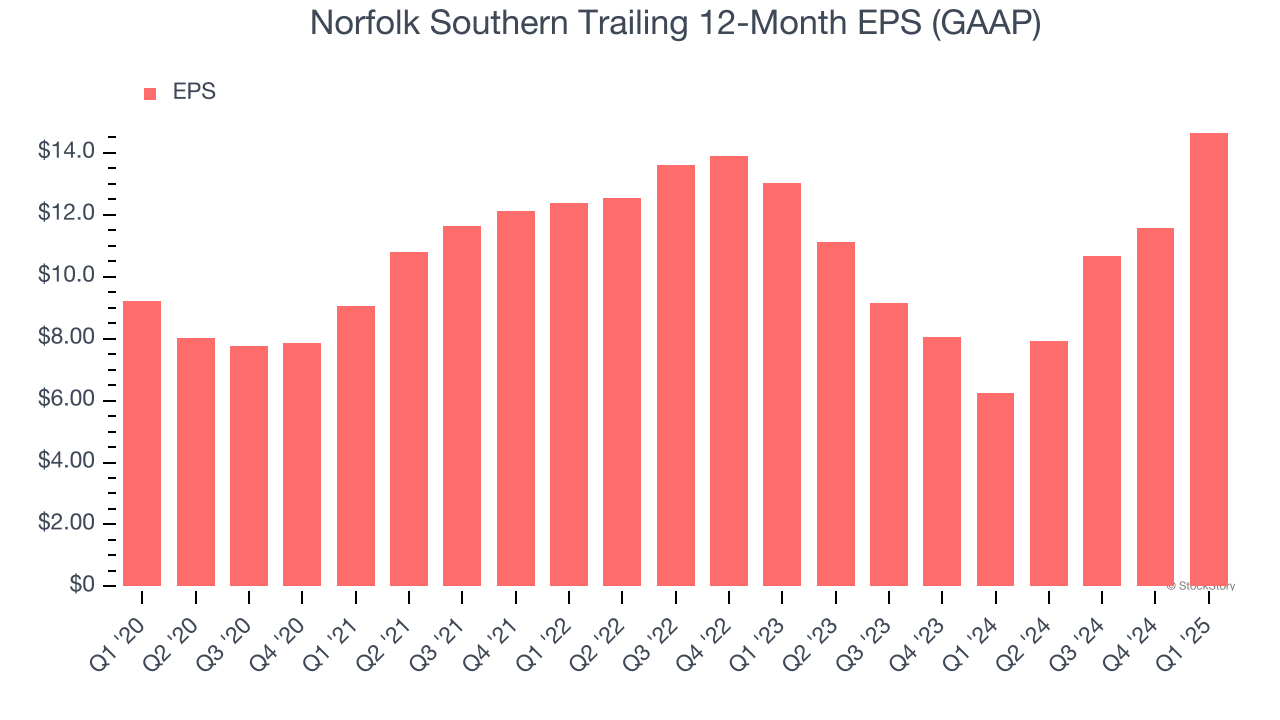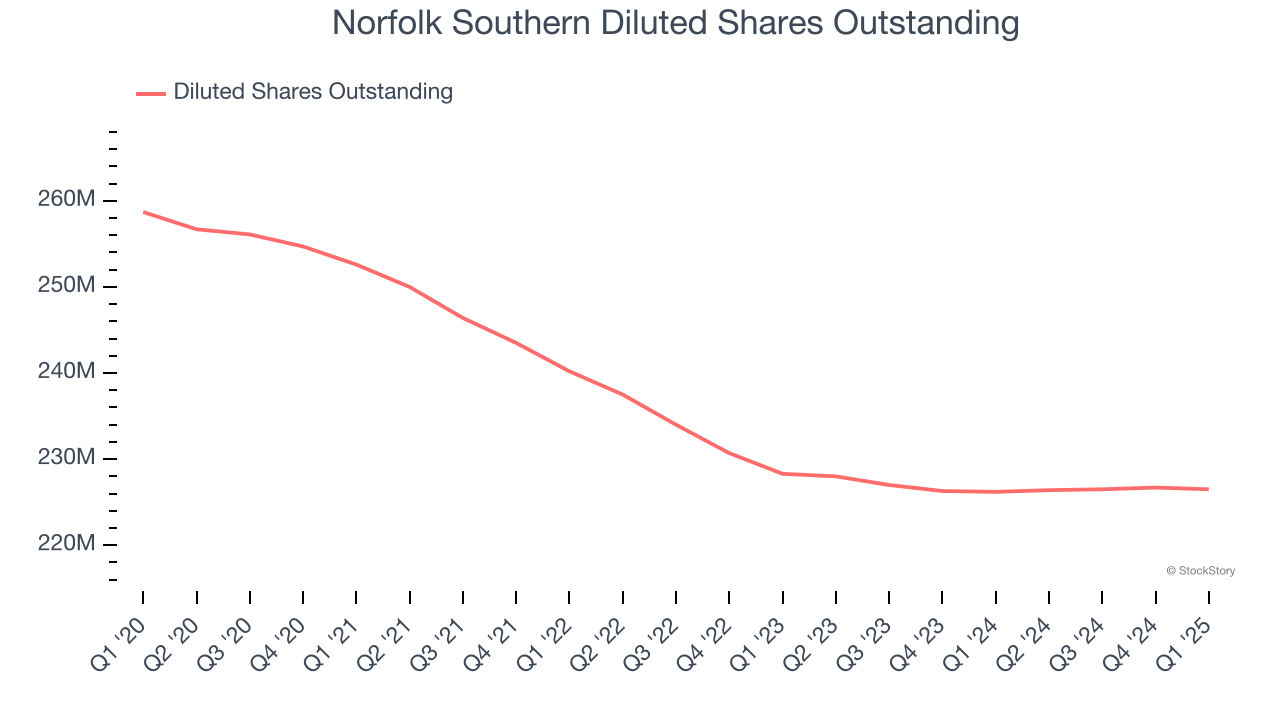
Freight transportation company Norfolk Southern (NYSE: NSC) met Wall Street’s revenue expectations in Q1 CY2025, but sales were flat year on year at $2.99 billion. Its GAAP profit of $3.31 per share was 23% above analysts’ consensus estimates.
Is now the time to buy Norfolk Southern? Find out by accessing our full research report, it’s free.
Norfolk Southern (NSC) Q1 CY2025 Highlights:
- Revenue: $2.99 billion vs analyst estimates of $2.98 billion (flat year on year, in line)
- EPS (GAAP): $3.31 vs analyst estimates of $2.69 (23% beat)
- Adjusted EBITDA: $1.49 billion vs analyst estimates of $1.32 billion (49.8% margin, 13.3% beat)
- Operating Margin: 38.3%, up from 7.1% in the same quarter last year
- Free Cash Flow Margin: 16.7%, up from 9.4% in the same quarter last year
- Market Capitalization: $49.77 billion
Company Overview
Starting with a single route from Virginia to North Carolina, Norfolk Southern (NYSE: NSC) is a freight transportation company operating a major railroad network across the eastern United States.
Rail Transportation
The growth of e-commerce and global trade continues to drive demand for shipping services, presenting opportunities for rail transportation companies. While moving large volumes by rail can be highly cost-efficient for customers compared to air and ground transport, this mode of transportation results in slower delivery times, presenting a trade off. To improve transit times, the industry continues to invest in digitization to optimize fleets, loads, and even braking systems. However, rail transportation companies are still at the whim of economic cycles. Consumer spending, for example, can greatly impact the demand for these companies’ offerings while fuel costs can influence profit margins.
Sales Growth
A company’s long-term sales performance can indicate its overall quality. Any business can put up a good quarter or two, but many enduring ones grow for years. Over the last five years, Norfolk Southern grew its sales at a sluggish 1.8% compounded annual growth rate. This fell short of our benchmarks and is a poor baseline for our analysis.

Long-term growth is the most important, but within industrials, a half-decade historical view may miss new industry trends or demand cycles. Norfolk Southern’s performance shows it grew in the past but relinquished its gains over the last two years, as its revenue fell by 3.3% annually. Norfolk Southern isn’t alone in its struggles as the Rail Transportation industry experienced a cyclical downturn, with many similar businesses observing lower sales at this time. 
This quarter, Norfolk Southern’s $2.99 billion of revenue was flat year on year and in line with Wall Street’s estimates.
Looking ahead, sell-side analysts expect revenue to grow 2.7% over the next 12 months. Although this projection suggests its newer products and services will catalyze better top-line performance, it is still below the sector average.
Today’s young investors won’t have read the timeless lessons in Gorilla Game: Picking Winners In High Technology because it was written more than 20 years ago when Microsoft and Apple were first establishing their supremacy. But if we apply the same principles, then enterprise software stocks leveraging their own generative AI capabilities may well be the Gorillas of the future. So, in that spirit, we are excited to present our Special Free Report on a profitable, fast-growing enterprise software stock that is already riding the automation wave and looking to catch the generative AI next.
Operating Margin
Operating margin is a key measure of profitability. Think of it as net income - the bottom line - excluding the impact of taxes and interest on debt, which are less connected to business fundamentals.
Norfolk Southern has been a well-oiled machine over the last five years. It demonstrated elite profitability for an industrials business, boasting an average operating margin of 33.9%. This result isn’t surprising as its high gross margin gives it a favorable starting point.
Looking at the trend in its profitability, Norfolk Southern’s operating margin rose by 6.1 percentage points over the last five years, as its sales growth gave it operating leverage.

In Q1, Norfolk Southern generated an operating profit margin of 38.3%, up 31.2 percentage points year on year. The increase was solid, and because its operating margin rose more than its gross margin, we can infer it was more efficient with expenses such as marketing, R&D, and administrative overhead.
Earnings Per Share
We track the long-term change in earnings per share (EPS) for the same reason as long-term revenue growth. Compared to revenue, however, EPS highlights whether a company’s growth is profitable.
Norfolk Southern’s EPS grew at a decent 9.7% compounded annual growth rate over the last five years, higher than its 1.8% annualized revenue growth. This tells us the company became more profitable on a per-share basis as it expanded.

We can take a deeper look into Norfolk Southern’s earnings to better understand the drivers of its performance. As we mentioned earlier, Norfolk Southern’s operating margin expanded by 6.1 percentage points over the last five years. On top of that, its share count shrank by 12.4%. These are positive signs for shareholders because improving profitability and share buybacks turbocharge EPS growth relative to revenue growth. 
Like with revenue, we analyze EPS over a more recent period because it can provide insight into an emerging theme or development for the business.
For Norfolk Southern, its two-year annual EPS growth of 6.1% was lower than its five-year trend. We hope its growth can accelerate in the future.
In Q1, Norfolk Southern reported EPS at $3.31, up from $0.23 in the same quarter last year. This print easily cleared analysts’ estimates, and shareholders should be content with the results. Over the next 12 months, Wall Street expects Norfolk Southern’s full-year EPS of $14.65 to shrink by 9.9%.
Key Takeaways from Norfolk Southern’s Q1 Results
We were impressed by how significantly Norfolk Southern blew past analysts’ EBITDA expectations this quarter. We were also glad its EPS outperformed Wall Street’s estimates. Zooming out, we think this was a good quarter with some key areas of upside. The stock traded up 2.6% to $226 immediately following the results.
Norfolk Southern may have had a good quarter, but does that mean you should invest right now? If you’re making that decision, you should consider the bigger picture of valuation, business qualities, as well as the latest earnings. We cover that in our actionable full research report which you can read here, it’s free.







